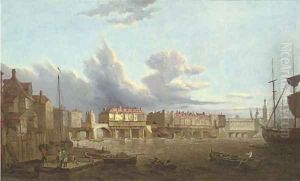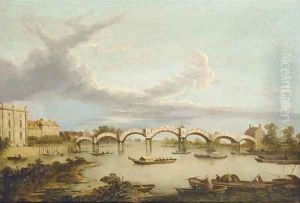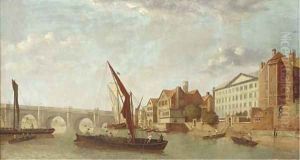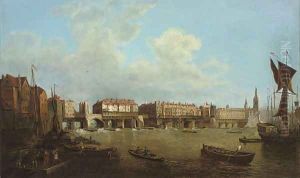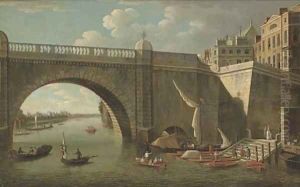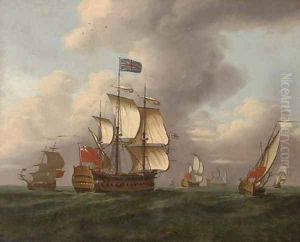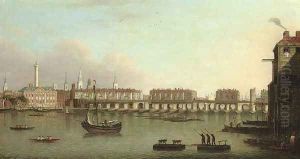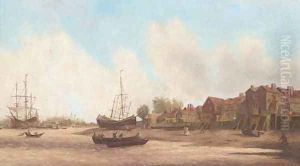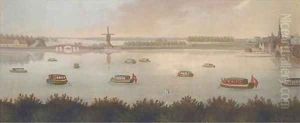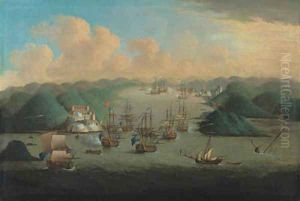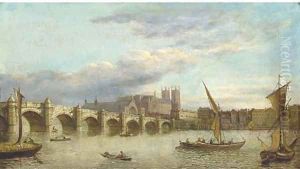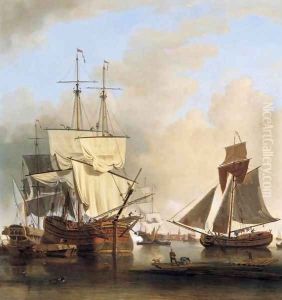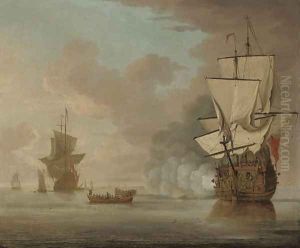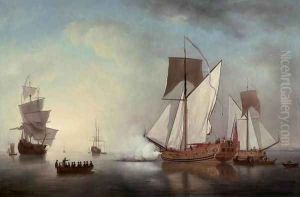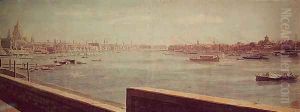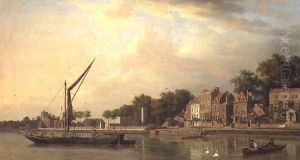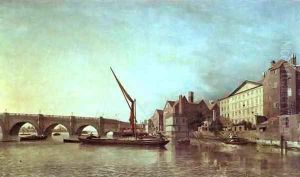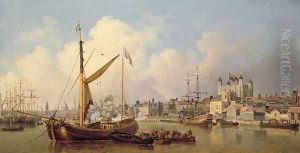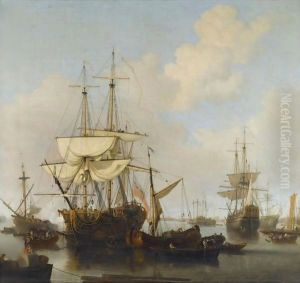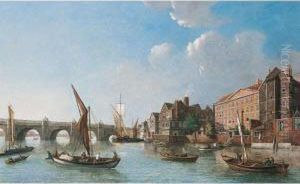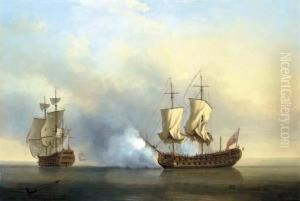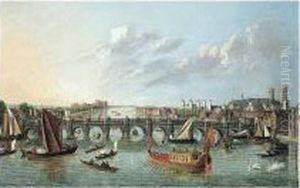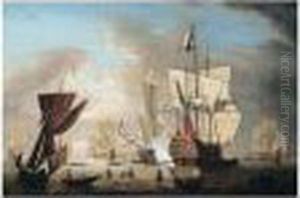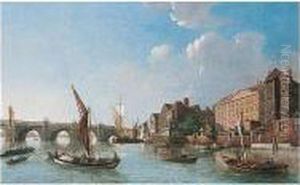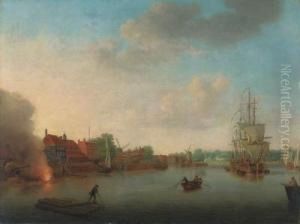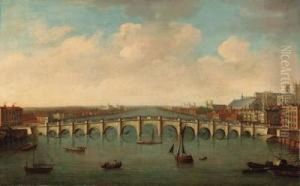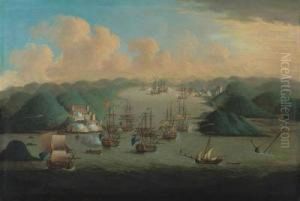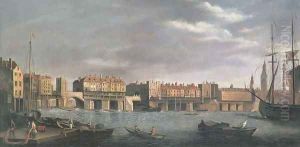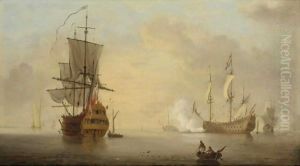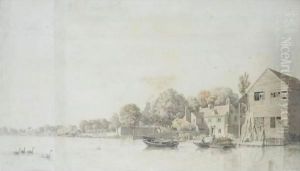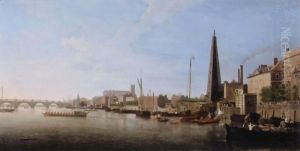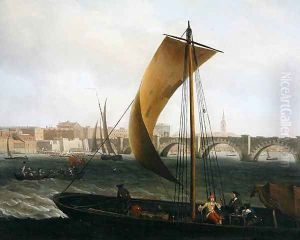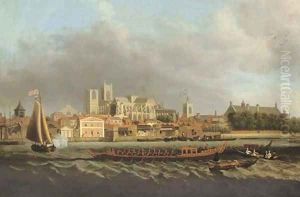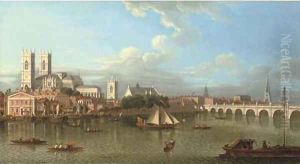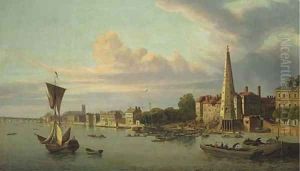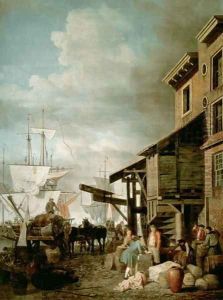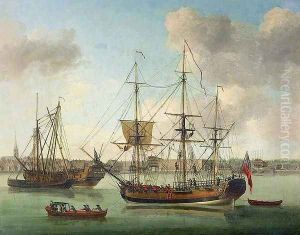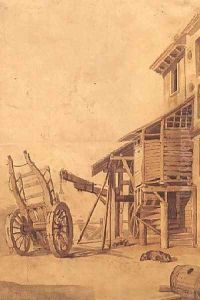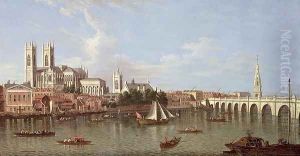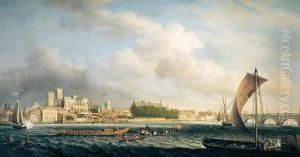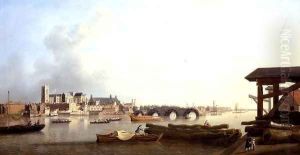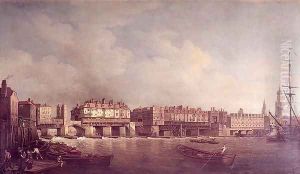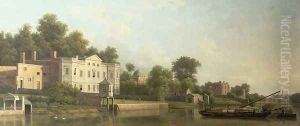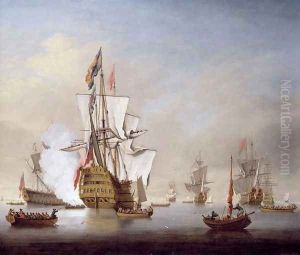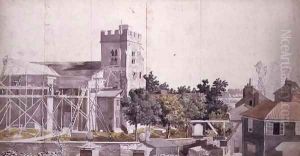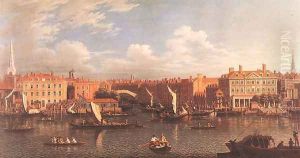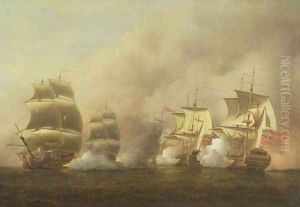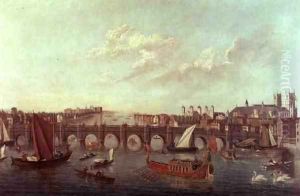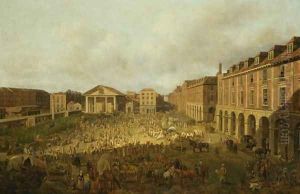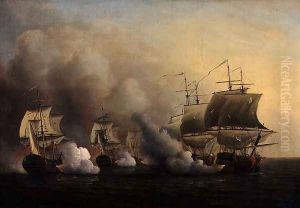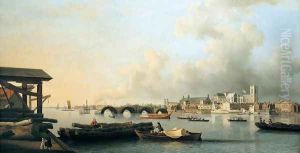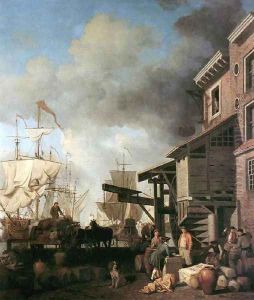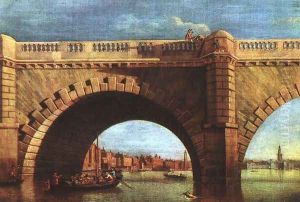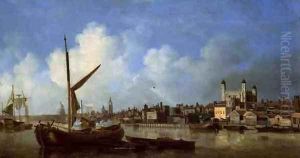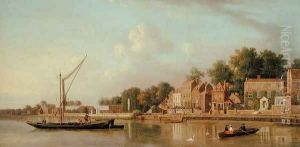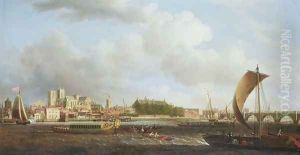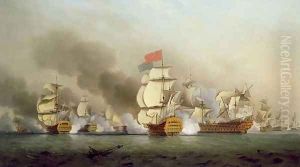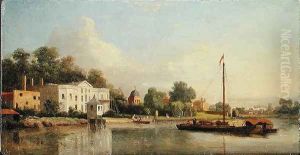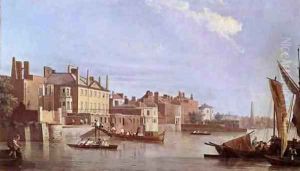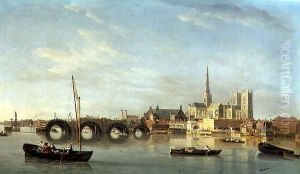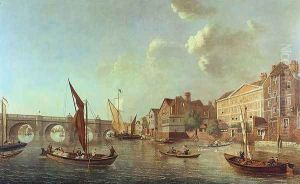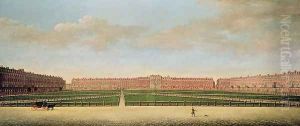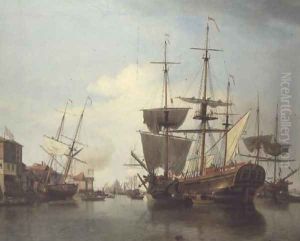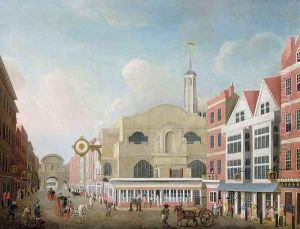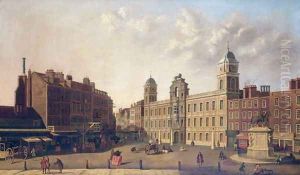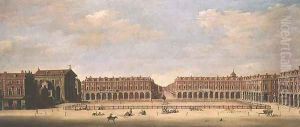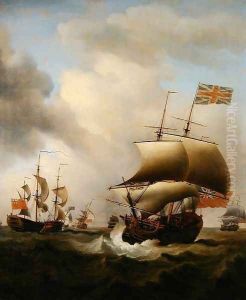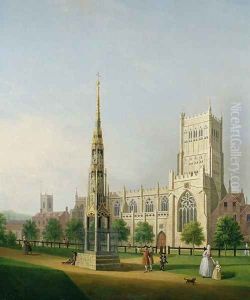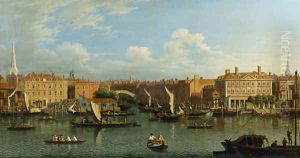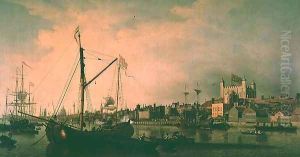Samuel Scott Paintings
Samuel Scott was a British landscape painter, often associated with the English School of painting, who was active during the 18th century. Born in 1702, Scott's early life and training are not well-documented, but he is known to have been active in London by the 1720s. He initially established himself as a marine painter, a genre that was gaining popularity in England at the time. Scott's works from this period show a strong influence from the Dutch marine tradition, which was highly regarded in the early 18th century.
Scott's marine paintings typically featured bustling scenes of ports and harbors, often with an array of ships and small boats, showcasing his ability to capture the movement of water and the intricacies of the vessels. His attention to detail and his use of light were particularly admired, and his paintings often conveyed a sense of the atmosphere and the business of maritime life.
By the 1730s, Samuel Scott had started to expand his repertoire to include landscape and topographical paintings, which depicted specific locations with accurate details. These works often featured London landmarks and the River Thames, reflecting the growing interest in British landscapes among the country's art patrons. His views of London, particularly his depictions of the Thames and its surrounding architecture, are considered some of his most important contributions to the genre of landscape painting.
In 1732, Scott accompanied the marine painter Charles Brooking on a journey down the Thames to document the river and its shores, resulting in a series of paintings that were both artistically significant and historically valuable. Scott was also influenced by the Italianate style, which is evident in some of his later works that include classical architecture and Mediterranean scenes.
Throughout his career, Samuel Scott was closely associated with other prominent artists of his time. He was a friend and rival of the famous landscape painter Canaletto, who spent some years in England, and the two artists' works were often compared. Scott was also a member of the St. Martin's Lane Academy, an important precursor to the Royal Academy, where he interacted with many of the leading artists and intellectuals of his day.
Samuel Scott's success as an artist was reflected in the patronage he received from notable figures, including aristocrats and members of the British upper class. Despite his success, there is little record of Scott's personal life, and he appears to have lived relatively modestly. He continued to paint until his later years, although his output and the quality of his work declined in the 1760s. Samuel Scott passed away in 1772, leaving behind a legacy as one of the key British landscape painters of the 18th century, whose works provide a valuable visual record of the period and have continued to be admired for their artistic qualities.
